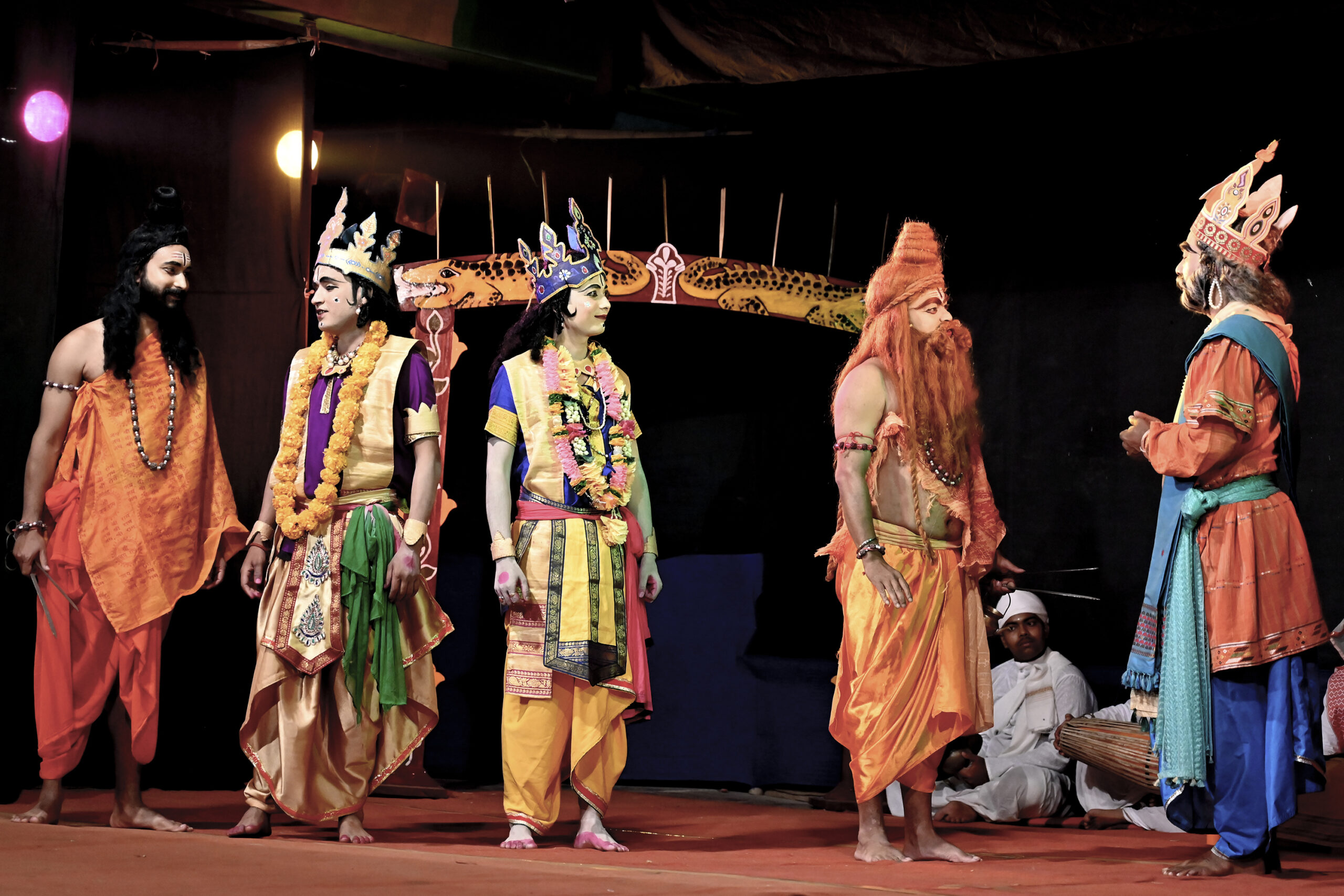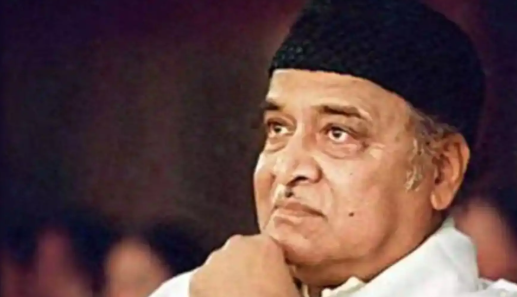Bhaona is a traditional performing art form from Assam, India, that blends drama, music, and dance to share religious and moral messages. Created by the revered saint-scholar Srimanta Sankardeva in the 15th-16th century, Bhaona is a key part of Assam’s cultural heritage. It’s a unique way to tell stories, often about good triumphing over evil, through colorful performances that captivate audiences. This post explores the origins, elements, types, and modern significance of Bhaona in simple words, perfect for anyone curious about Assamese culture.
What is Bhaona?
Bhaona is a traditional Assamese performance art that combines acting, singing, and dancing to narrate mythological stories, mainly from Hindu epics like the Ramayana and Mahabharata. The plays, called Ankiya Nats (one-act plays), focus on themes of devotion, morality, and the victory of good over evil. Performed in community spaces like Namghars (prayer halls), Bhaona is more than entertainment—it’s a spiritual experience that brings people together.
Why is Bhaona Special?
- Religious Connection: Rooted in the neo-Vaishnavite Bhakti movement, Bhaona was designed to spread devotion to Lord Krishna and make religious teachings accessible to everyone.
- Cultural Heritage: It preserves Assam’s traditions, blending local folk elements with spiritual storytelling.
- Community Bonding: Performed in villages and towns, Bhaona fosters unity among diverse communities, making it a cultural festival.
Origins of Bhaona
Bhaona was created by Srimanta Sankardeva (1449–1568), a spiritual leader and reformer who founded the Eksarana Naam Dharma, a religious movement centered on devotion to one God (Lord Vishnu or Krishna). To reach the common people, many of whom couldn’t read Sanskrit religious texts, Sankardeva used Bhaona as a medium to share spiritual messages through entertainment. His first play, Chihna-Yatra, featured him as Lord Vishnu, setting the stage for this art form.
Sankardeva wrote seven Ankiya Nats, and his disciple Madhavdeva, along with others, contributed more plays. Inspired by folk traditions like Ojapali and other Indian performance arts such as Ramleela and Kathakali, Sankardeva crafted Bhaona to be simple yet impactful. He also created Brajavali, a lyrical language blending Assamese and Maithili, to make dialogues divine yet understandable. Today, many performances use spoken Assamese, especially in Upper Assam, to connect with modern audiences.
Key Elements of Bhaona
Bhaona is a rich, multisensory experience with distinct features that make it unique:
1. Sutradhar (Narrator)
- The Sutradhar is the heart of Bhaona, guiding the audience through the story. They recite verses, sing, dance, and explain the plot, ensuring everyone understands the narrative. Dressed in special attire, the Sutradhar bridges the spiritual and artistic aspects of the performance.
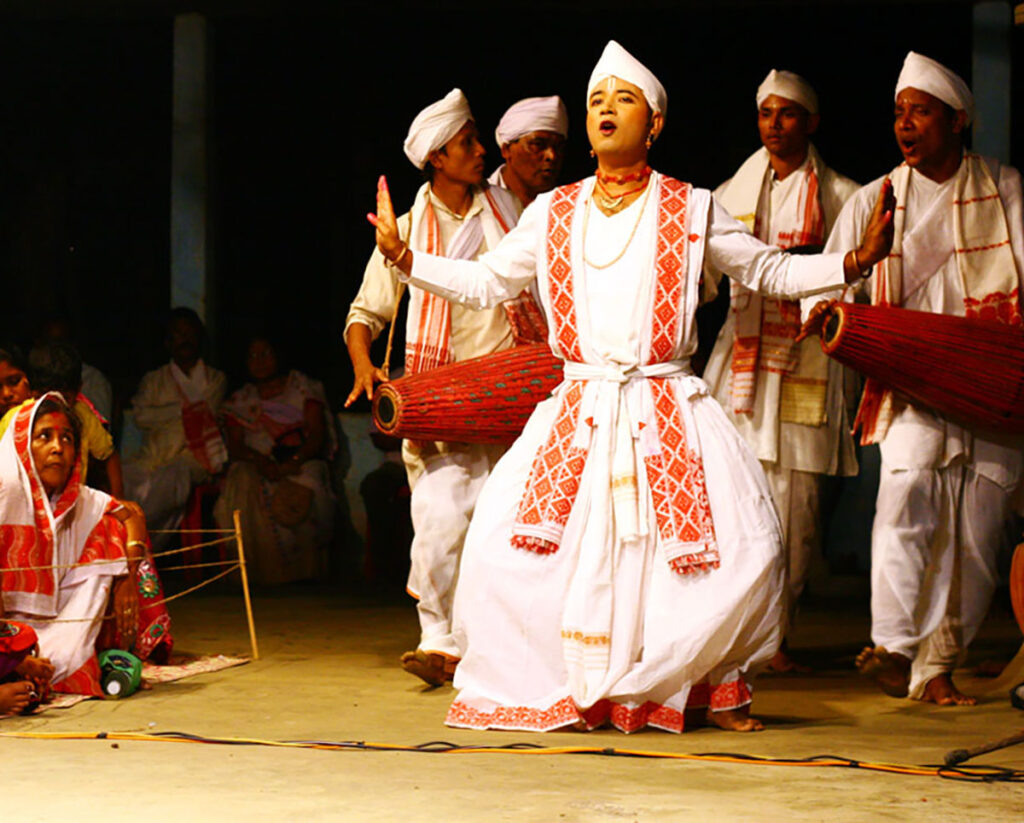
2. Bhaoriya (Actors)
- Bhaoriyas are the actors who bring characters like kings, queens, gods, and demons to life. Traditionally, only men performed, with some playing female roles, but today, women also participate. Their vibrant costumes and makeup add to the drama’s visual appeal.
3. Gayan and Bayan (Singers and Musicians)
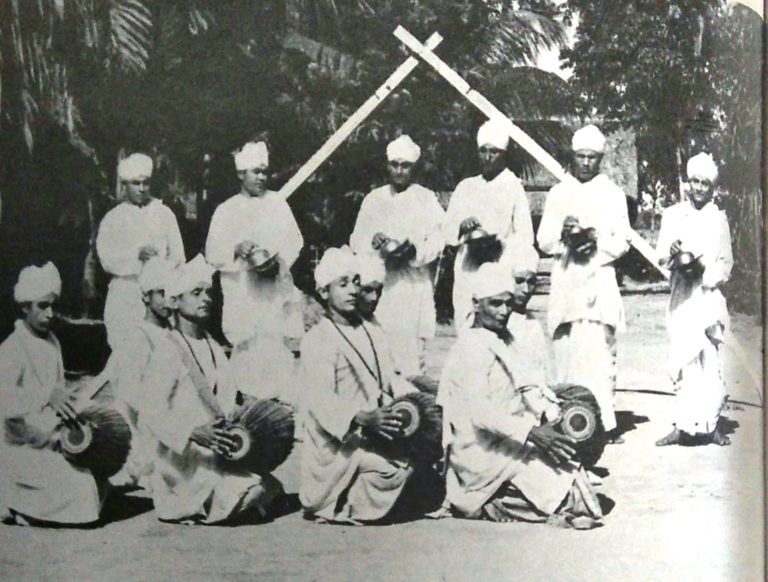
- Gayan (singers) and Bayan (musicians) create the emotional and rhythmic backbone of Bhaona. They perform Borgeets (devotional songs composed by Sankardeva and Madhavdeva) and play traditional instruments like:
- Khol: A two-sided drum.
- Taal: Brass cymbals.
- Nagara: A large drum.
These elements enhance the storytelling and evoke devotion.
4. Costumes and Masks
- Bhaona features elaborate costumes made from local materials, including glittering outfits and unique headgear called pag. The Sutradhar often wears a koshapatiya pag, while musicians wear smaller khekerupatiya pag. Masks (mukha) are used in some performances, especially in Majuli, to represent gods, demons, or animals, adding a dramatic flair.
5. Stage and Setting
- Bhaona is traditionally performed in Namghars, open prayer halls with a shrine (Manikut) at one end. The audience sits on three sides, creating an intimate experience. Actors enter through an Agni Garh (archway of lights), symbolizing a spiritual transition. In modern times, Bhaona is also staged on raised platforms or in auditoriums.
6. Brajavali and Assamese Language
- Originally performed in Brajavali, a poetic language created by Sankardeva, Bhaona now often uses Assamese to reach wider audiences. This shift reflects its adaptability while preserving its divine essence.
7. Sattriya Dance

- Bhaona incorporates Sattriya, a classical dance form from Assam, with graceful movements and intricate footwork. Actors use these dance steps to enter and exit, adding elegance to the performance.
Types of Bhaona
Over time, Bhaona has evolved into various forms, each with unique characteristics:
- Baresahariya Bhaona: Large-scale performances with intricate costumes and multiple acts, often held in Nagaon. These are grand, visually stunning shows.
- Mukha Bhaona: Features masks to depict characters, popular in Majuli. These are shorter but intense, focusing on key scenes.
- Matribhasha Bhaona: Performed in spoken Assamese, especially in Upper Assam, to make it more accessible.
- Phaujiya Bhaona: Originated in Cooch Behar, blending Bengali and Assamese elements.
- Dhura Bhaona: Influenced by Bengal’s Dhup Kirtan, performed in Barpeta and Kamalabari Satras.
- Buka Bhaona: Short plays performed during festivals, engaging and easy to follow.
- Juri and Cukraganar Bhaona: Performed without a Sutradhar, focusing on direct storytelling.
- English Bhaona: A modern adaptation performed in English to reach global audiences, starting around 2018.
The Role of Majuli in Bhaona
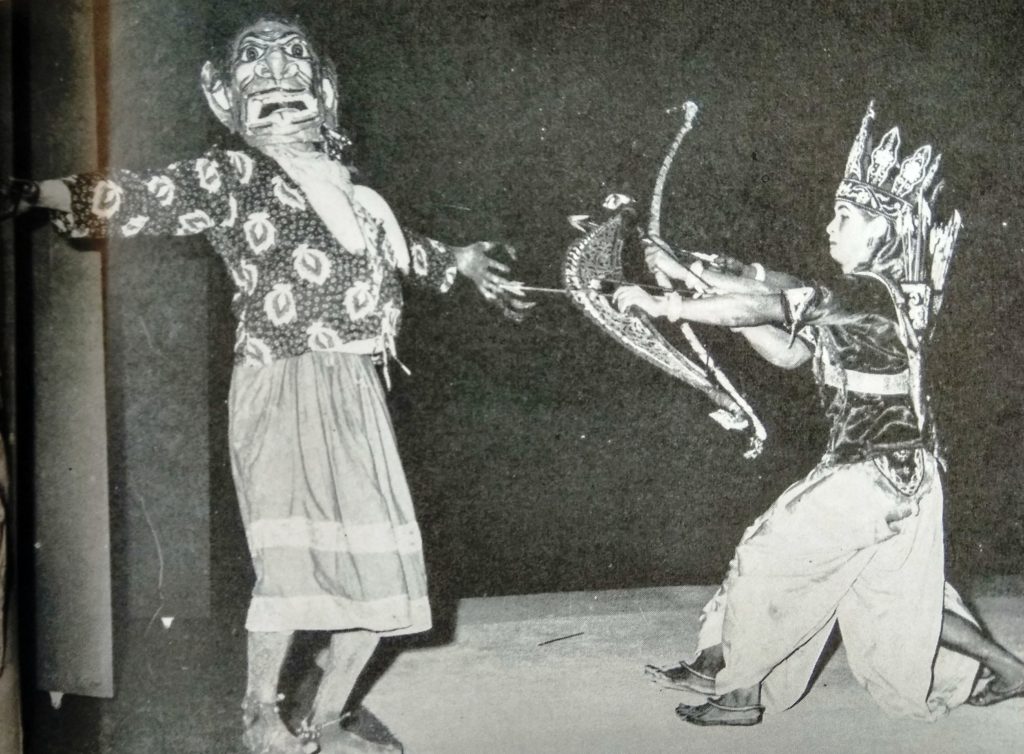
Majuli, the world’s largest river island in Assam’s Brahmaputra River, is a cultural hub for Bhaona. Home to many Xatras (Vaishnavite monasteries), Majuli preserves this art form through regular performances. Its serene landscapes and spiritual significance make it an ideal setting for Bhaona, attracting locals and tourists alike. The island’s Xatras train artists, ensuring the tradition thrives.
Bhaona in Modern Times
Bhaona remains a living tradition, adapting to modern tastes while staying true to its roots:
- Global Reach: Performances in English, like those in Abu Dhabi, have introduced Bhaona to international audiences.
- Modern Stages: While Namghars remain central, Bhaona is now performed in auditoriums with advanced lighting and sound.
- Contemporary Themes: Some performances incorporate modern issues, ensuring relevance in today’s world.
- Cultural Preservation: Bhaona continues to unite communities, with festivals like the Jamuguri Bare Shaharia Bhaona showcasing its enduring popularity.
Importance
Bhaona is more than a play—it’s a celebration of Assam’s spiritual and cultural identity. It promotes values like unity, devotion, and morality, making it relevant across generations. Its ability to blend tradition with modernity ensures it remains a vibrant part of Assam’s heritage. As Sarbananda Sonowal, former Chief Minister of Assam, said, “Bhaona is an epitome of Assam’s rich cultural & spiritual heritage.”
How to Experience Bhaona
- Visit Majuli: Attend performances at Xatras or Namghars during festivals.
- Explore Assam’s Festivals: Look for Baresahariya Bhaona or other local events.
- Watch Online: Some performances are streamed or recorded for global audiences.
- Learn More: Visit cultural websites or museums like the Abhijna e-Museum for insights.
Conclusion
Bhaona is a timeless art form that brings Assam’s stories, spirituality, and traditions to life. From its origins with Srimanta Sankardeva to its modern adaptations, Bhaona continues to inspire and unite people. Whether you’re in Assam or exploring online, experiencing Bhaona is a journey into the heart of Assamese culture. Share this vibrant tradition with others and keep its legacy alive!
Also See: Poems of Hiru Da: The Heart of Assamese Poetry
Also See: Assam’s Kaziranga Ranks 3rd Globally in Tiger Density

